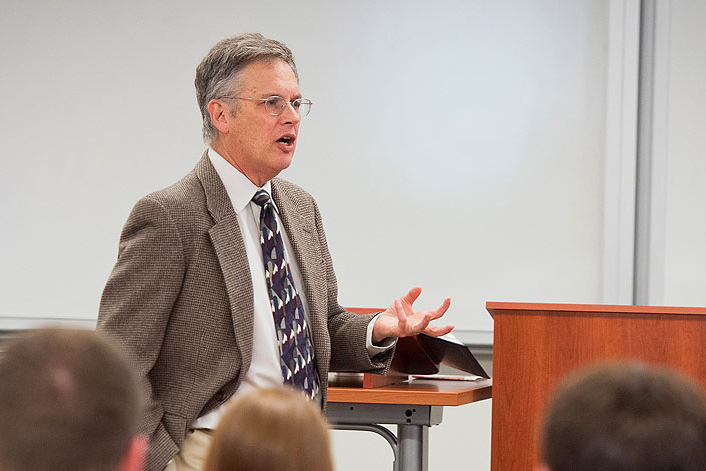In the words of John Nance Garner, the office of the Vice Presidency “was not worth a quart worth of spit.” Having served as a one-term vice president in President Franklin D. Roosevelt’s administration, Garner and his colorful opinion may seem to offer an inside look into the role of Vice President of the United States.
But is there more to the story?
In his discussion on October 19, aptly entitled “Vice Presidency: Worth More Than a Bucket of Warm Spit?”, Professor Joel Goldstein of Saint Louis University School of Law tackled the ever-changing role of America’s previously most underrated position.
In his new book, The White House Vice Presidency: The Path to Significance, Mondale to Biden, Professor Goldstein discusses the evolution of the Vice Presidency and the office’s increasing importance. He acknowledged that although our nation is in the Biden era of visible and tangible vice presidential power, this was not always the case. Since the time of the Founding Fathers, individuals disparaged the vice presidency, with John Adams recognizing it as the “most insignificant office” in the United States government. It was not until 1977 and the Carter administration that this opinion began to change.
The Constitution outlines the two major responsibilities of the Vice President: to act as the President of the Senate and to serve as successor if the President should die. Goldstein noted that by focusing less on a president’s mortality and more on the capacity for increased leadership on the part of a vice president, any given administration has the opportunity to be more successful and effective.
Goldstein presented his audience with the merits of the Mondale model, named for Walter Mondale, Vice President to President Jimmy Carter. A collaborative initiative between Carter and Mondale, this plan increased vice presidential access to matters of state, including the Vice President in all White House meetings and correspondence as well as offering an open door policy to the Oval Office.
This model would go on to be followed by every president/vice president pair to date, paving the way for autonomous vice presidential duties and powers. For Goldstein, this political shift ultimately is evidence of the ability of a constitutional institution to change, and eventually become “a part of government business,” solely because of the choices of forward-thinking individuals and the existence of a living Constitution.
Story by Brianna Marshall ’19
Photo: Saint Louis University School of Law


